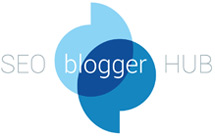If your website targets users in different countries or speaks to people in multiple languages, there’s one thing you must get right: the hreflang tag. It may sound technical, but this small bit of code can make a big difference in how your site performs in international search results.
What Is a Hreflang Tag?
A hreflang tag is a piece of HTML code added to your website to tell search engines the language and region your content is intended for. In simple terms, it helps Google serve the right page to the right audience based on their location and language.
For example, if you have one page in English for the UK and another in French for France, the hreflang tag lets search engines know which page to show to which user.
You’ll usually find this tag in the <head> section of a page’s HTML. That’s why it’s often called the hreflang HTML head element.
Why Does the Hreflang Tag Matter for SEO?
When done right, hreflang tag SEO can improve user experience and boost your visibility in local search results. Here’s how:
- Avoid Duplicate Content Issues: Without hreflang, Google might see similar pages in different languages as duplicates. This can hurt your rankings.
- Target the Right Audience: With proper language-targeting SEO, your pages appear in the correct language and for the right region.
- Improve Click-through Rates (CTR): Users are more likely to click on content in their own language, especially if the search result snippet matches what they expect.
Common Hreflang Implementation Mistakes to Avoid
Getting your hreflang implementation wrong can do more harm than good. Here are a few common mistakes to watch out for:
- Missing Self-reference: Each page should reference itself as well as its alternates.
- Broken or Incorrect Links: Ensure every hreflang tag leads to a live, correct URL.
- Not Including a Return Tag: If page A references page B, then page B must also reference page A.
- Using Hreflang on Canonical Tags: Never confuse hreflang with canonical tags; using them wrongly together can confuse search engines.
The Benefits of Using Hreflang Tags
When implemented correctly, hreflang tag benefits are clear:
- Better rankings in localised search engines
- More accurate targeting of international visitors
- Lower bounce rates and higher engagement from the right users
- A smoother experience for multilingual audiences
In a globalised world, thinking local is essential. That’s exactly what international SEO hreflang allows you to do—connect with the right people in the right language.
Final Thoughts
A hreflang tag may seem like a small technical step, but it can make a big difference in how your content performs globally. If you serve audiences across languages or borders, it’s worth the effort to get it right.
For more insights and updates, stay tuned to SEO Blogger Hub. Whether you’re scaling globally or refining your multilingual SEO, our latest guides help you grow without borders.
